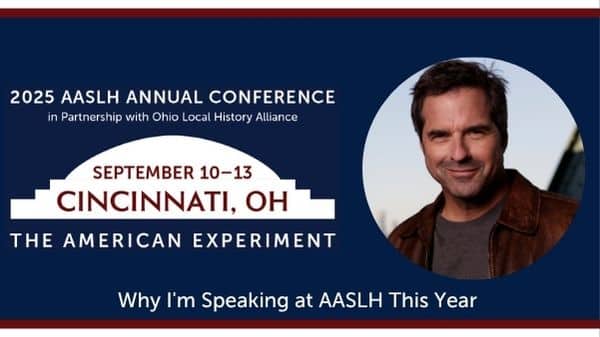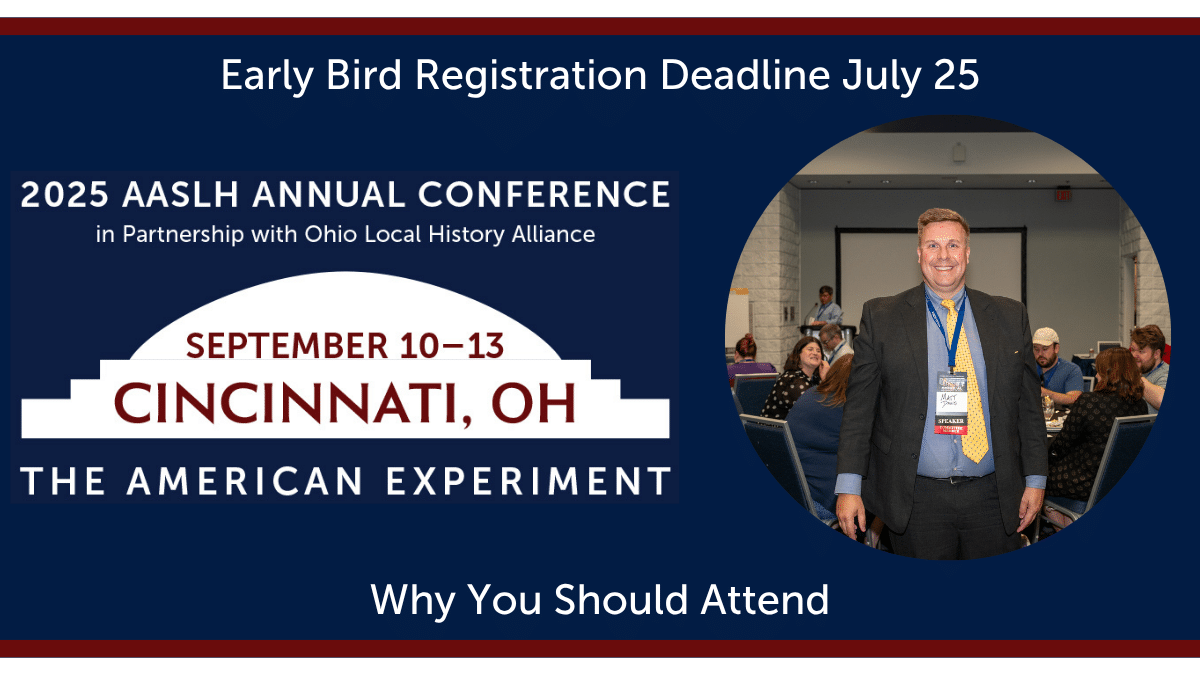
By René A. Ballesteros, Latinos in Heritage Conservation
My name is René A. Ballesteros, and I recently attended the 2024 AASLH Annual Conference thanks to support from the Douglas Evelyn Diversity Fellowship. I reside in the city of Edinburg, in the Rio Grande Valley of South Texas, and currently serve with Latinos in Heritage Conservation (LHC) as the Development Manager. I will defend my Master of Arts thesis at the University of Texas Rio Grande Valley at the end of this calendar year. My current work with LHC and professional development opportunities with AASLH have shaped how I interpret history using next-history practices. I was first connected with AASLH in 2017 when the Museum of South Texas History sent staff to the conference in Austin, Texas. This was the beginning of a valuable experience with AASLH, and I appreciate the opportunity for this fellowship and investment in diverse history practitioners.
The entire AASLH staff, committee members, and extended community merit a well-deserved congratulations for an amazing conference experience in the charming city of Mobile, Alabama. Despite challenging weather, the committee and staff presented a fun, interactive, and valuable experience for all attendees.
As a current member of the Educators and Interpreters Committee and an AASLH conference attendee since 2017, I’m invested in staying at the forefront of history’s next practices. The conference offered a unique space to represent the E&I committee and interact with history practitioners.
The greatest value for anyone attending the AASLH Annual Conference is connecting with colleagues from different museums and historical sites that can lead to valuable partnerships, resource sharing, and better history work across the nation.
Volunteering with a committee is an opportunity to have a seat at the table in how historical interpretation and preservation work can be leveraged for the greater good. I was honored to leverage my professional experiences by facilitating a discussion table at “Leading from the Middle,” a conference session presented with my esteemed colleagues and fellow E&I committee members Bethany Hrachovec and Carla Mello and History Leadership Institute facilitator Andrea Jones.

Receiving the Douglas Evelyn Diversity Fellowship relieved the stress of travel and hotel funds. This allowed me to fully enjoy the enriching experience of the 2024 AASLH Annual Meeting. I hope to continue serving with AASLH and connecting with seasoned and new history professionals.



